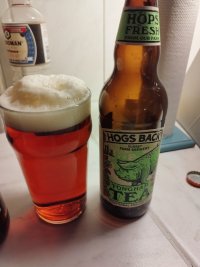Oh, would you have a recipe from that time? Though
@Northern_Brewer 's link also helps a lot.
Could you provide a name? The big ones in my area had none. Also I wonder why people would use it as a spread, except if it has lots of caramel flavour. How is it?
Old Peculier used to be made with molasses or black treacle. Lyle's Black Treacle is a mix of golden syrup and molasses. And I believe the choice which kind of molasses you use is pretty important. Young's Winter Warmer is still brewed with molasses, which is part of their proprietary sugar YSM (Young's Special Mix). If anyone wants the specifications, I got them from a former Young's brewer.
The colouring I bought is called the same, though it's just diluted with water, no sugar or salt added.








































![Craft A Brew - Safale S-04 Dry Yeast - Fermentis - English Ale Dry Yeast - For English and American Ales and Hard Apple Ciders - Ingredients for Home Brewing - Beer Making Supplies - [1 Pack]](https://m.media-amazon.com/images/I/41fVGNh6JfL._SL500_.jpg)



















